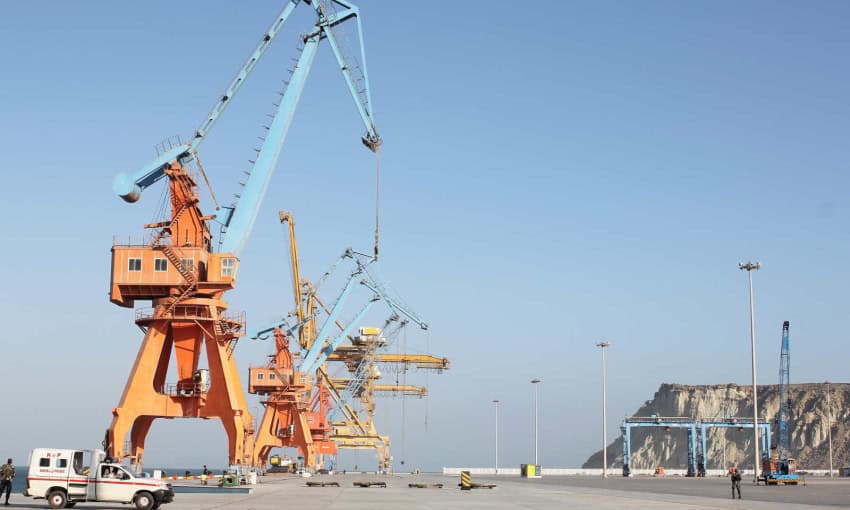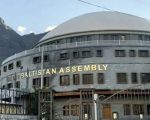Recently, the China-Pakistan Economic Corridor (CPEC) Summit and Expo concluded successfully. The two-day event,held in Islamabad on Sep 6th , enhanced awareness about business opportunities in Pakistan among local and foreign businessmen. The event was welcomed and approved by all the attendees.
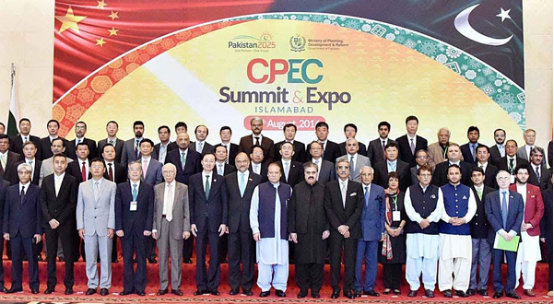
To elaborate the advantages of the CPEC extensively and shed light on the much-discussed benefits of the project, I have reproduced some facts and analyses below from News about CPEC and cited some professional opinion from experts.
In the facts mentioned below, I’d like to shed some light on CPEC ‘s positive implications on Pakistan.
First, the CPEC is a pact between Pakistan and China for progressive Co-operation in improving Pakistan’s infrastructure and providing employment opportunities.
Infrastructure:
With an investment of 46 billion U.S Dollars and scores of infrastructure projects, the ongoing construction of the China-Pakistan Economic Corridor (CPEC) is undoubtedly one of the largest endeavors now taking place on the planet.
CPEC, which includes Roads, energy projects, industrial parks and the Gwadar port, will satisfy Pakistan’s immediate needs as well as helping the south Asian country get back on its feet after years of anti-terror campaigns wrecked its economy.
Three years after the initiative on the construction of CPEC was jointly announced by China and Pakistan, the project has already produced its early fruits as new roads and power plants have boosted Pakistan’s growth.
ELECTRIC POWER
Located 20 km east of Pakistan’s largest city of Karachi, the Bin Qasim power plant is one of the pioneer and flagship projects of CPEC scheduled to operate at the end of next year.
The Pakistani government expects the plant to resolve the electricity crisis as the economy flourishes.
In the capital city of Islamabad, there is almost no supply of electricity for almost half a day, with the rural areas in even worst conditions, supplied by electricity only six hours a day.
The recurrent power outages have made the poor vulnerable to extreme heat which bakes the country every summer, and has the repercussions on industry.
The construction of coal-fired plant undertaken by PowerChina, will be used to accommodate two 660-megawatt generator units, which would generate 1,320 megawatts of electricity per year, more than a quarter of the 4,500-5,000 megawatts of power shortage estimated for the year 2012.
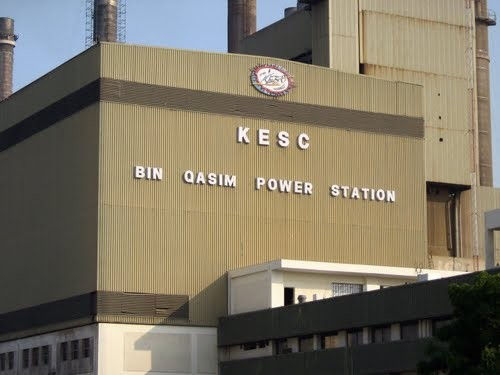
“With three more plants like this one, Pakistan would have no more energy woes,” said Chen Enping, a manager at PowerChina.
At the nominal distance from Karachi, the operation of the first phase of a Chinese wind farm is already in full swing. Thirty-three windmills erected by China Three Gorges Corporation churned out 140 million kwh of electricity last year, supplying electricity to 60,000 families in the region.
“Before this, we had blackout most of the time. Now we can enjoy three or four more hours of power each day, which means a running fan can help us get through the night,” Hassan, a local resident, told Xinhua, adding that he hopes the second phase of the wind farm, under construction in January, will make the next summer more comfortable.

Besides the achievement above, here are progresses of those Dams as well as Power Plants:
Dams
Neelum-Jehlum Dam = 60% Done, expected to supply 1000 MW by 2017
Karot Power Project = 20% Done
Dasu Dam/Bhasha Dam = Land has been allocated, on ground work yet to start
Tarbela 4th Extension ( 1600MW ) = 50% Done
Power Plants
Port Qasim Coal Plant = 40% Done
Sahiwal Coal Plant = 60% Done
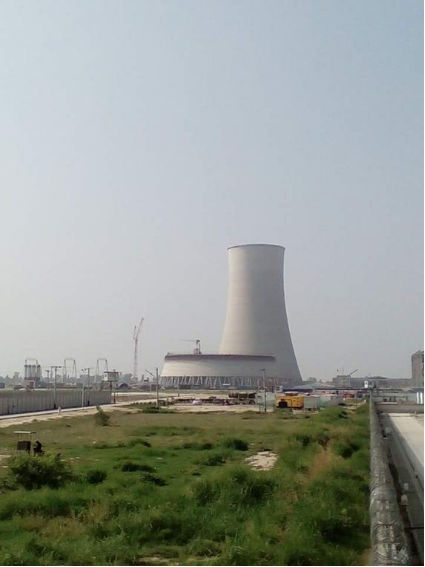
Thar Coal Power Plant = 10% Done
Bhikhi Thermal Plant = 25% Done
Kasur Balloki Thermal Plant = 15%
Gawadar Thermal Station = progressing towards completion
Karachu Nuclear Power Complex ( K3 and K4) = 35 % Complete
Rahimyar Khan Thermal Station = 10%
Jhamphir Wind Farm = 100% Done
Gharo Wind Farm = 70% Done
Quiad e Azam Solar Park = 100% Done
See also:
Feature: Chinese-aided power plant project to help meet Pakistan’s energy needs
http://news.xinhuanet.com/english/2016-07/03/c_135485387.htm
LIFELINES
For Sher Afzart, a shop owner in northern Pakistan’s Hunza Valley, the Karakorum Highway is what his livelihood depends on.
The two-lane highway, originally built by China in the 1970s and recently renovated by China Road and Bridge Corporation, connects Kashgar, a commercial hub in northwest China’s Xinjiang Uigur Autonomous Region, and Pakistan.
Afzart can save days on trips to Kashgar to buy goods as the road cuts through the Karakorum mountains. There is a steady flow of business as thousands of Chinese workers labor around Hunza.
Following the completion of the Karakorum Highway renovation project, more business opportunities are created, Afzart said.
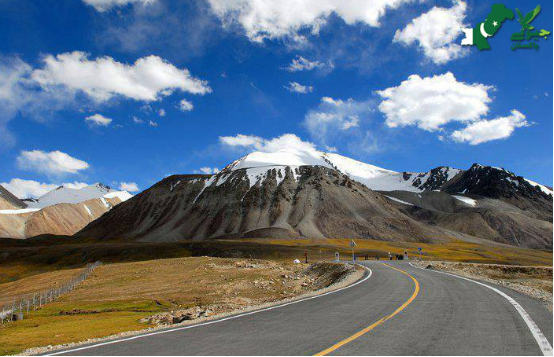
The Karakorum Highway is just one of the roads that falls under CPEC. The M-4 National Motorway, a strategic artery in central Pakistan, is also being paved by the Chinese.
Wang Feng, chief engineer of China Railway First Group Co., Ltd., who assigned to construct a segment of the motorway, said despite the temperature at the site often rises up to more than 50 degrees Celsius during summer, his team is beating the odds to complete the project on time.
“We were touched by the generous local people, who offered us fruits and tea when we first arrived. To repay their kindness we built two bridges and water ducts at our own cost to help local farming,” Wang said.
Apart from highways, railways and light rails are also part of the grand plan to upgrade Pakistan’s road network, as the current one, constructed in the British colonial era, has been proved to be disadvantageous for the thriving economy.
And here is the progress of those Highways being constructed under CPEC:
Lahore Mass Transit Metro Rail = 40%
Hazara Expressway ( 6 Lanes Access Controlled, 118 km) = 30% Done

DI Khan- Islamabad Motorway ( 4 Lanes Access Controlled, 285km) = 5% Done
Lahore-Multan Motorway ( 6 Lanes Access Controlled, 270km) = 20% Done
Gojra-Khanewal Motorway ( 4 Lanes, Access Controlled, 120km) = 35% Done
Multan-Sukkur Motorway ( 6 Lanes, Access Controlled, 397km) = 10% Done
Sukkur-Hyderabad Motorway ( 6 Lanes, Approved, Construction to Start March ‘17
Karachi-Hyderabad Motorway ( 6 Lanes, Access Controlled, 131km) = 55% Done
Gawadar-Hoshab Highway ( 2 Lanes, ~150km) = DONE
Hoshab-Punjgur-Khuzdar Highway ( 2 Lanes, 892 km) = 40% Done
Ratodero-Khuzdar Motorway ( 2 Lanes, 170km) = 35% Done
Karakoram Highway upgradation ( 800km, 2 Lanes) = 60% Done ( Khunjerab- Chilas is Done, work in progress from Chilas- Thakot)
Gawadar Expressway ( East and West ) ( 6 Lanes, 50km) = 30%Done
KKH Tunnels ( 16km) = 100% Done
Upgradation of DI Khan- Zhob- Quetta Highway = ~ 200km ( ~25% Done)
GWADAR PORT
The Gwadar port, located in the southern coast of Pakistan, is where CPEC meets the Indian ocean. From here resources can commence their journey onto the hinterlands of Pakistan and western China, while Chinese and Pakistani products can be shipped out to every corner of the world.
Viewed from above, the port is like an anchor protruding into the emerald waters, forming two natural bays that are as deep as 14.5 m, making them perfect harbors.

After the CPEC cooperation program was launched in 2013, a plan was developed in the following years to comprehensively transform the fishing town into a modern metropolis complete with industrial zones, a harbor and recreational zones.
Gwadar Port Authority Chairman Dostain Jamaldini has big ambitions for the port, eyeing Dubai, which is just across the Arabian Sea, as a model.
See also: Feature: The Dubai dream of a Pakistani fishing town
http://news.xinhuanet.com/english/2016-07/09/c_135500247.htm
Near future plans for the port area includes the construction of a Free Trade Zone, a Special Economic Zone, a coastal expressway, an international airport and a pipeline linking Iran, which are all part of the CPEC plan refashioning the town which will be the hinge of the corridor.
“Pakistan is ready to offer the most generous terms for companies investing in the port,” Jamaldini said, “We believe the favorable policies and the superb location of the port will soon attract the interest of investors worldwide.”
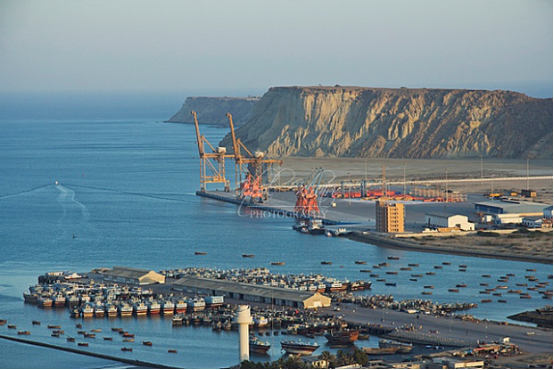
Following are the current achievements of Gawdar Port:
Gawadar International Airport = Land Acquired, construction to begin as soon as possible.
Gawadar Deep Sea port = DONE , 2 berths have been upgraded to 4 berths, with extension up to 16 berths available, docking and container terminal are active, and the port trust building and office are all completed since 2015.
EMPLOYMENT & DAILY LIFE CONVENIENCE:
Construction of Infrastructure is underway at expeditious pace.
After Completion, the projects would generate over 20,000,000 Jobs which would help in improving the standards of living of Millions of people and finally Bring down Pakistan’s poverty rate below 5%.
Pakistan would finally have a power surplus and overcome its power crises and a journey from Peshawar to Karachi ( 1600km ) could be made by road nonstop in just 14 hours ( 120k/h speed on Access controlled Motorways.
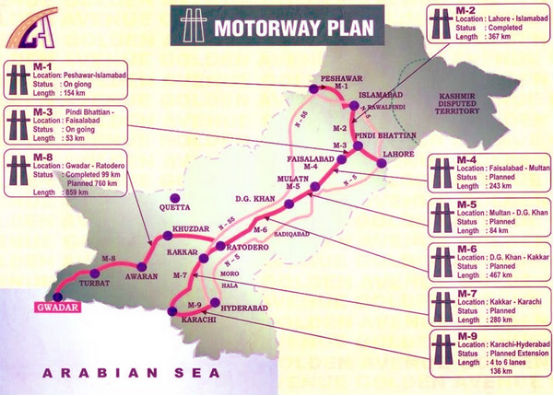
A journey from Chinese Border to Karachi would take 22 hours ( 1800km) and a journey from Gawadar to China would last for 25 hours ( 1900 km). Since most of the route falls in Balochistan, this province would see significant rise in standard of living and transition of the people from traditional Nomadic lifestyle to a more service based one.
The impact of CPEC on the daily lives of Pakistani people and their livelihoods will only be evidently visible within 5 to 10 years as the CPEC has already started generating many jobs.
Secondly, the CPEC is a pact between Pakistan and China for progressive Co-operation in developing Pakistan’s education exchange system and providing more job-oriented courses.
After the successful state visit by Chinese President Xi Jinping to Pakistan in April 2015, China and Pakistan are working together for deepening cultural and education exchanges.
The China-Pakistan relations have entered into a new stage of “grand development” as China-Pakistan Economic Corridor (CPEC) has brought brilliant education opportunities for Pakistani youth. Nowadays, hundreds of talented teenagers are immensely transforming their lives under the multi-billion dollar project.

Under the CPEC, Chinese Confucius Institution will open more Chinese-Pakistan courses and increase enrollment numbers. Besides, it will also provide more scholarships for those students who have financial problems.
“With the implementation of projects under CPEC, more and more job opportunities are being created for talented professionals. For example, just a few days ago, Port Qasim Coal Fire Power Project recruited hundreds of engineers who would be sent to China for training”
“Having been educated in China, and familiar with Chinese technologies and standards, you would have a great competitive edge when facing this kind of opportunity in the coming days. I believe all of you will have a bright future in this regard,” the Chinese envoy addressed in a scholarship award ceremony held for 220 Pakistani students for the year 2016-17.

China had covered students from all over Pakistan, not only from big cities but also from other cities and towns like Gwadar, Gujranwala, Kamalia, Multan, Swat, Mingora, Sargodha, and Dera Ismail Khan.
“The students are going to be educated in different fields in various Chinese universities, including computer science and technology, business administration, finance, physical chemistry, architecture, civil engineering, broadcasting communication, international law, journalism and so on, covering bachelors, master, phd and advance training programmes. What they learn in China will prove to be very useful to future development of Pakistan and their hometowns.

Besides this program, the Ministry of Education in China supports the Chinese universities to allocate special funds for the students who want to study in China.
“More than 2000 Pakistani students has been awarded the special universities scholarship this year. More and more Pakistani youth will study in China, and make greater contribution to enhancing the bilateral friendship. The Chinese embassy will continue to do its best in providing facilitation and services in this regard,” said the Chinese envoy.
Let’s have a look of current CPEC achievement on education:
Pak-China Training Institute – Gawadar = 50%
Pak China Knowledge Park – Lahore = 15%
Balochistan will get Two New Universities in line with CPEC
In a scholarship award ceremony held for 220 Pakistani students for the year 2016-17. 131 students got scholarship certificates from all over Pakistan while rest of the students are already studying in China. This makes Pakistan the biggest scholarship winning country by the Chinese government in South Asia.
See also:
Role of Higher Education sector significant for achieving China-Pakistan Economic Corridor objectives: Ahsan Iqbal
NUML to teach Chinese to Baloch people, Balochi to Chinese nationals
http://www.dawn.com/news/1276116
Third, The CPEC is a pact between Pakistan and China for progressive Co-operation in promoting humanitarian development in Pakistan.
In Oct. 26 2015, an earthquake of 8.1-magnitude hit Pakistan, killing at least 279 people, wounding over 1,964 others and damaging 94,548 house and 497 schools.
China provided humanitarian supplies worth 10 million yuan (1.6 million U.S. dollars) to Pakistan for the relief of the earthquake victims. A cargo plane reached Islamabad from Shanghai with 300 tents, 20,000 blankets and 60 electricity generators.
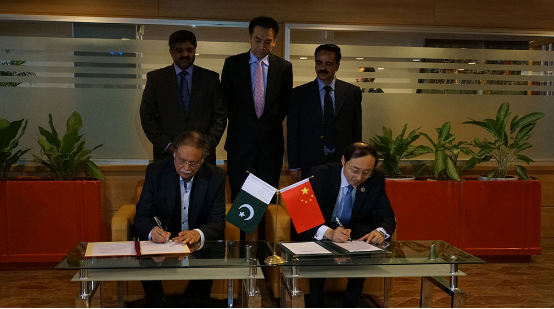
See also:China provides humanitarian aid for Pakistan’s quake-hit people
http://news.xinhuanet.com/english/2015-11/05/c_134787372.htm
CPEC will also endorse and promote Philanthropy in Pakistan. The Pakistan Red Crescent and the Red Cross Society of China have always been in close cooperation, and now will further strengthen cooperation in the fields of natural and man-made disasters.
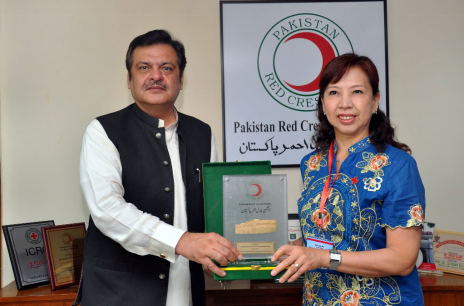
With the proceeding of CPEC, Chinese Red Cross will set branches in Gwadar as well as Gilgit .They will also endow 15 hospitals among those two region.
See also: CPEC will promote humanitarian development in Pakistan: Saeed Elahi
https://en.dailypakistan.com.pk/pakistan/cpec-will-promote-philanthropy-in-pakistan-saeed-elahi/
Last but not least, The CPEC is a pact between Pakistan and China for progressive Co-operation in proving military strength and promoting administrative capability.
MILITARY
From army side, Chief of the Army Staff General Raheel Sharif once made it clear that the security forces of Pakistan will make certain that every project under the China-Pakistan Economic Corridor (CPEC) is implemented successfully at all costs. A Special Security Division (SSD) has been created to monitor and provide security to every project that comes under CPEC. During a visit to the headquarters of SSD, General Sharif instructed the task force to ensure the successful implementation of every project under the economic corridor.

What has army achieved until now:
As Pakistan’s powerful military seeks to protect billions of dollars of Chinese investment, a heavy police presence, guarded convoys, new checkpoints and troop reinforcements have turned parts of the southern port city of Gwadar into a fortress.
The Pakistani army is dedicated to the safety of the CPEC. Until now, a senior security official in the town of around 100,000 people said a further contingent of 400-500 soldiers had been recruited as a temporary measure to protect Chinese nationals.
“There is an integrated mechanism of all the state and provincial security operators which already exists. Additionally, a proper security division has been assembled, which consists of about 15,000 people. It is commanded by a major general. And an equally sizable security division is being put together for the south of the CPEC in the southern part of Pakistan,” said Pakistan’s military spokesperson Lieutenant General Asim Saleem Bajwa.

However, Pakistan army is not only providing security for building the CPEC and the management of the CPEC, but also building roads and infrastructure.
The Pakistani army’s engineers are building a road about 874 kilometers long in the province of Balochistan in the south of Pakistan, 670 kilometers of which they have already completed. The construction work is being undertaken in remote areas in parts of the CPEC by army engineers and army engineering units.
Therefore, the Pakistan army is providing both the security and the construction work for the road.
See also:
To protect Chinese investment, Pakistan military leaves little to chance
http://www.reuters.com/article/pakistan-china-security-gwadar-idUSKCN0VH06F
Pakistani army ensures full security for CPEC
http://www.china.org.cn/world/2016-05/18/content_38477784.htm
No place for foreign stooges in Balochistan, says CM Zehri
https://en.dailypakistan.com.pk/headline/no-place-for-foreign-stooges-in-balochistan-says-cm-zehri/
GOVERNMENT
From the government side, Prime Minister Nawaz Sharif reiterated that CPEC would not only serve as a “game-changer” for Pakistan, but a “fate-changer “for entire region by helping it to get rid of economic deprivation and attain peace and prosperity.
Sharif said that the CPEC is a new concept of diplomacy based on shared goals of prosperity for Pakistan and the region, and a project to eliminate poverty, unemployment and underdevelopment.

Federal Minister for Planning and Development Ahsan Iqbal said that Pakistan’s economy has improved with the recent efforts made by the federal government and the law and order situation across the country has also shown promising results as compared to the past.

Moreover, Minister for Water and Power Khawaja Muhammad Asif while addressing the Sialkot Bar Association said “Pakistan government would complete the China-Pakistan Economic Corridor (CPEC) project with an active cooperation of all provinces which would make Pakistan economically strong.”
He maintained that the government is also making efforts for improving the means of communication with the concept for linking remote areas with developed parts through the development of road infrastructure under CPEC.
Furthermore, Talking on the China-Pakistan Economic Corridor (CPEC), Senate Deputy Chairman Maulana Haideri said that the project has the capability to change the destiny of the people of Balochistan. He added that through CPEC, Pakistan will greatly improve its image in the world.
He warned the provinces against the increasing conspiracies being crafted by the neighboring states against the implementation of CPEC in Pakistan.
What did government achieve during CPEC?
Punjab:
300 megawatt solar power project has been completed expeditiously at Quaid-e-Azam Solar Park Bahawalpur. Similarly, 65 percent civil work of 1320 megawatts coal power project in Sahiwal has been completed and this project will be completed in the middle of 2017.
The work is also in progress expeditiously on Lahore Orange Line Metro Train project and it is hoped that it will also be finished within stipulated period.

Balochistan:
The Balochistan Government is trying its utmost to introduce good governance and start mega developmental projects to create economic activity, Zehri said, adding: “We are the ones who have tackled the menace of corruption.
The commitment of the Pakistan government to make CPEC a success is highly commendable.
See also:
Chinese Foreign Minister Appreciates Pakistan’s Counter Terrorism Efforts
http://pakchinanews.pk/chinese-foreign-minister-appreciates-paks-effort-in-counter-terrorism/
UN official praises PM Nawaz for CPEC, TAPI projects
http://dunyanews.tv/en/SpecialReport/325865-UN-official-praises-PM-Nawaz-for-CPEC-TAPI-projec
Summary:
All in all, the CPEC carries vital strategic and financial benefit for the whole Pakistan. Under this project, China and Pakistan are working together for enhancing political mutual trust, expanding economic and trade cooperation and deepening cultural and educational exchanges.
Let’s just conclude with some words from a documentary showed on the CPEC Expo inauguration :
People said I(Pakistan) got old, but the truth is I never felt younger. I will fly higher, run faster. I will remain as young as ever. I am not the history, I am the future. I am everywhere. I am Pakistan.
Green people will change the history,Green people will define the future.

